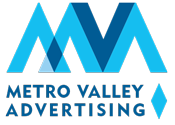The purpose of advertising and networking are the same, build connections. One reaches audiences through media channels, the other through personal interaction. Both require clarity, consistency, and trust to succeed. The similarities are numerous. When you think about it, networking vs advertising – more alike than you think.
Good advertising campaigns are carefully planned, tracked, and refined. Networking, when done well, should be executed the same way. When you apply advertising principles to your networking efforts, you increase your chances of stronger relationships and more opportunities.
Setting Clear Goals
No advertising agency would launch a campaign without clear objectives. In advertising, we measure KPIs such as reach, engagement rates, or conversions. These metrics define success and help refine strategy.
Networking should be no different. Before entering a room full of professionals, ask yourself, what do I want to achieve? Are you seeking introductions to decision-makers? Do you want partnerships that lead to new business? Without defined goals, networking can feel like random activity rather than a strategic investment.
Clarity directs your energy. Just as advertising dollars need targeting, your time in networking needs purpose.
Authenticity Is Non-Negotiable
Today’s consumers demand authenticity from brands. They want transparency, honesty, and a clear sense of values. Advertising that feels forced or manipulative loses trust quickly.
Networking follows the same rule. People can spot when you’re only interested in what they can do for you. Transactions alone don’t build long-term relationships. Showing genuine curiosity, listening, and offering value without expectation makes a lasting impression.
Authenticity becomes your strongest differentiator. Whether in an ad campaign or a handshake introduction, trust begins when people feel your sincerity.
The Power of Frequency
In advertising, a single impression rarely changes behavior. Success comes from repeated exposure. Frequency builds familiarity, and familiarity leads to recall.
Networking works the same way. Meeting someone once is only a first impression. If you want to stay top of mind, you must create multiple touchpoints. Attend events regularly, connect on LinkedIn, and follow up after meetings.
Just as consistent ad placement builds brand recognition, consistent networking builds personal recognition. In both cases, being visible matters.
Frequency Builds Trust
Repetition is not only about familiarity; it is also about credibility. A brand that shows up consistently across channels signals reliability. Consumers begin to believe the brand is solid.
In networking, repeated positive interactions have the same effect. When you follow through on introductions or provide helpful insights more than once, you become reliable. Trust grows with every touchpoint.
The bridge between awareness and action is trust. For advertisers, it drives purchase decisions. In networking, it drives referrals and opportunities.
Targeting
Fishing in the right pond is critical in both advertising and networking. In advertising, we direct media spend toward the channels and platforms our audience uses most. Otherwise, dollars are wasted.
Networking works the same way. Attending events that draw your target audience ensures your time and energy connect you with the right people. The better the fit between audience and intention, the stronger the results.
The Role of Follow-Up
One of the most powerful parallels between advertising and networking is follow-up. In advertising, we nurture leads with retargeting campaigns. A consumer who clicked once may not convert right away, but continued engagement keeps them moving closer to action.
In networking, follow-up is just as critical. A quick message after meeting someone shows professionalism. Referencing your conversation demonstrates that you listened. Adding value through an article, introduction, or idea creates momentum.
Networking without follow-up is like running ads without retargeting. You miss the chance to deepen the relationship and move toward results.
Having a CRM Is Critical
Every advertising agency relies on a CRM to manage prospects, track campaigns, and measure outcomes. Data guides decisions, ensuring no lead falls through the cracks.
Networking benefits from the same structure. Tracking who you met, where you met them, and what you discussed helps you build stronger relationships. Without a system, it’s easy to lose track and miss follow-ups.
Whether you use a simple spreadsheet or a robust CRM, organization is what turns chance meetings into long-term connections.
Measure ROI and Refine
Advertising is judged by return on investment. Agencies look at cost per lead, return on ad spend, and overall conversion. Without measurement, you can’t know if the strategy is effective.
Networking deserves the same level of accountability. Are you gaining referrals? Do introductions turn into business opportunities? Are you building partnerships that add value over time?
By measuring results, you identify what works and refine what doesn’t. Continuous improvement is essential in both advertising and networking.
Storytelling Matters
The best advertising tells a compelling story. It frames the brand as the solution to a problem and makes the message memorable.
Networking thrives on storytelling too. When you clearly explain who you are, what you do, and why it matters, you create impact. A short, well-crafted story about your work is more memorable than a long list of details.
In both disciplines, stories stick. They turn information into connection.
Networking vs Advertising – More Alike Than You Think.
Networking and advertising are more alike than most people realize. Both require strategy, authenticity, frequency, and measurement. They succeed when trust is built and stories are told well. Both fail when goals are unclear, follow-up is missed, or targeting is too broad.
For marketing professionals, the lesson is clear. Apply the same discipline you use in advertising to your networking efforts. Treat each connection as an opportunity to create meaningful impressions, nurture trust, and measure results.
When you bring the principles of advertising to networking, you amplify your lead generation and growth. The similarities are informative. Master both, and you strengthen the foundation of your success. Yes, networking vs advertising – more alike than you think.



